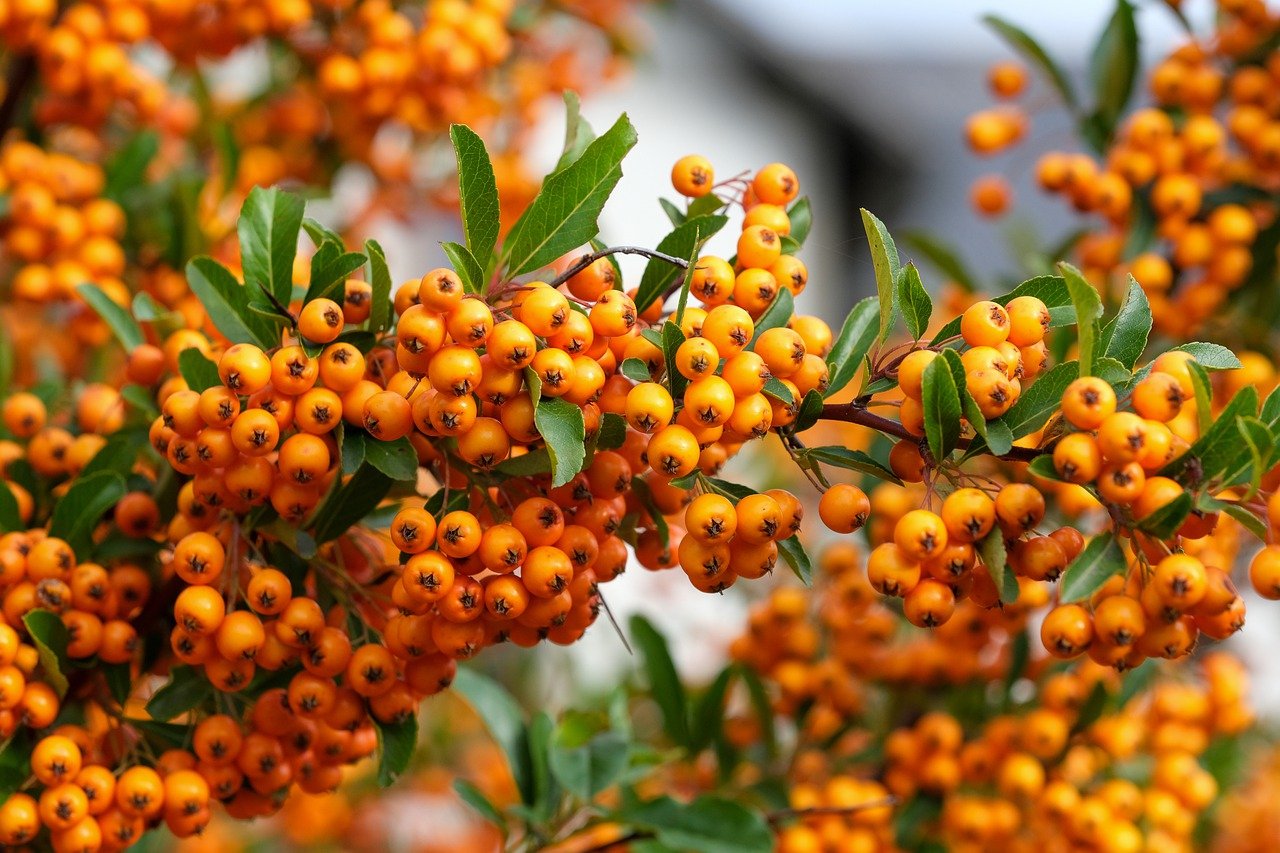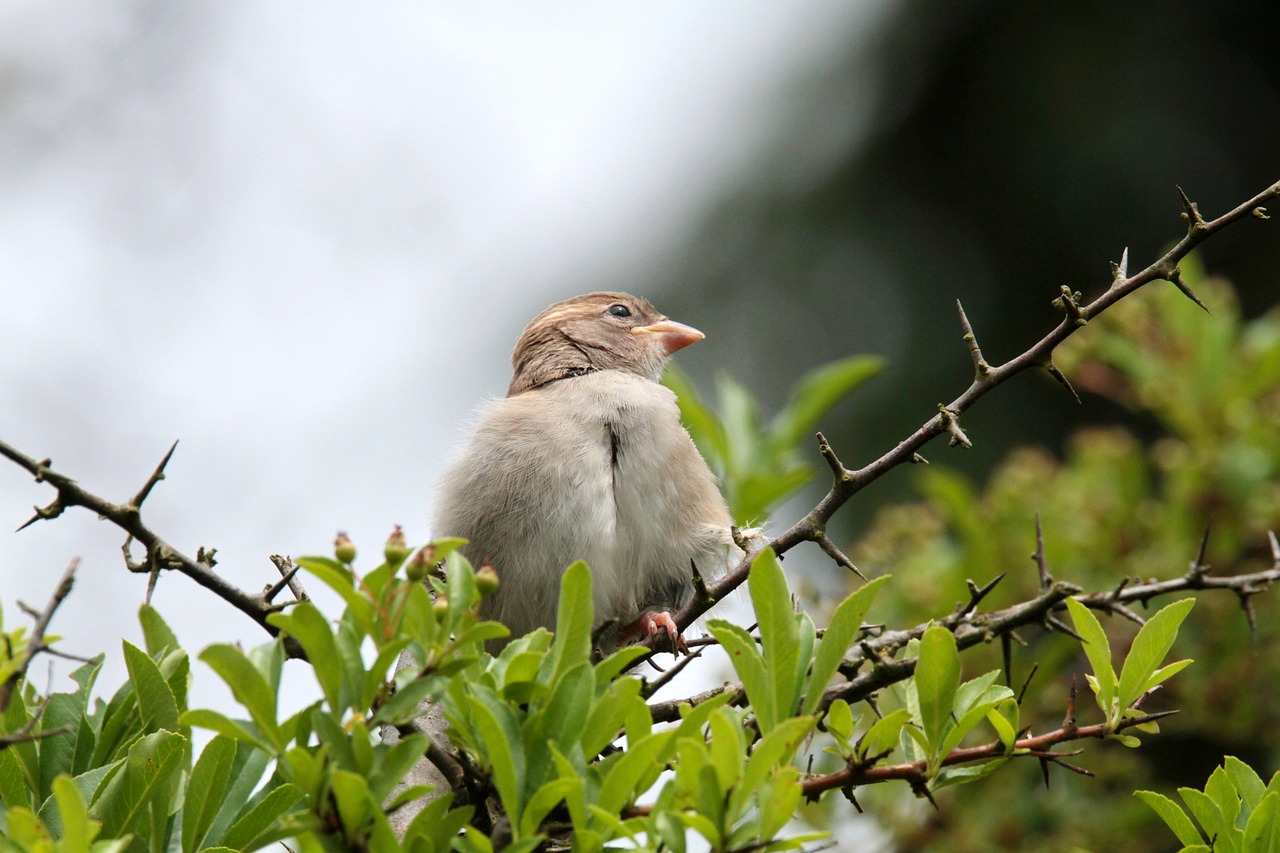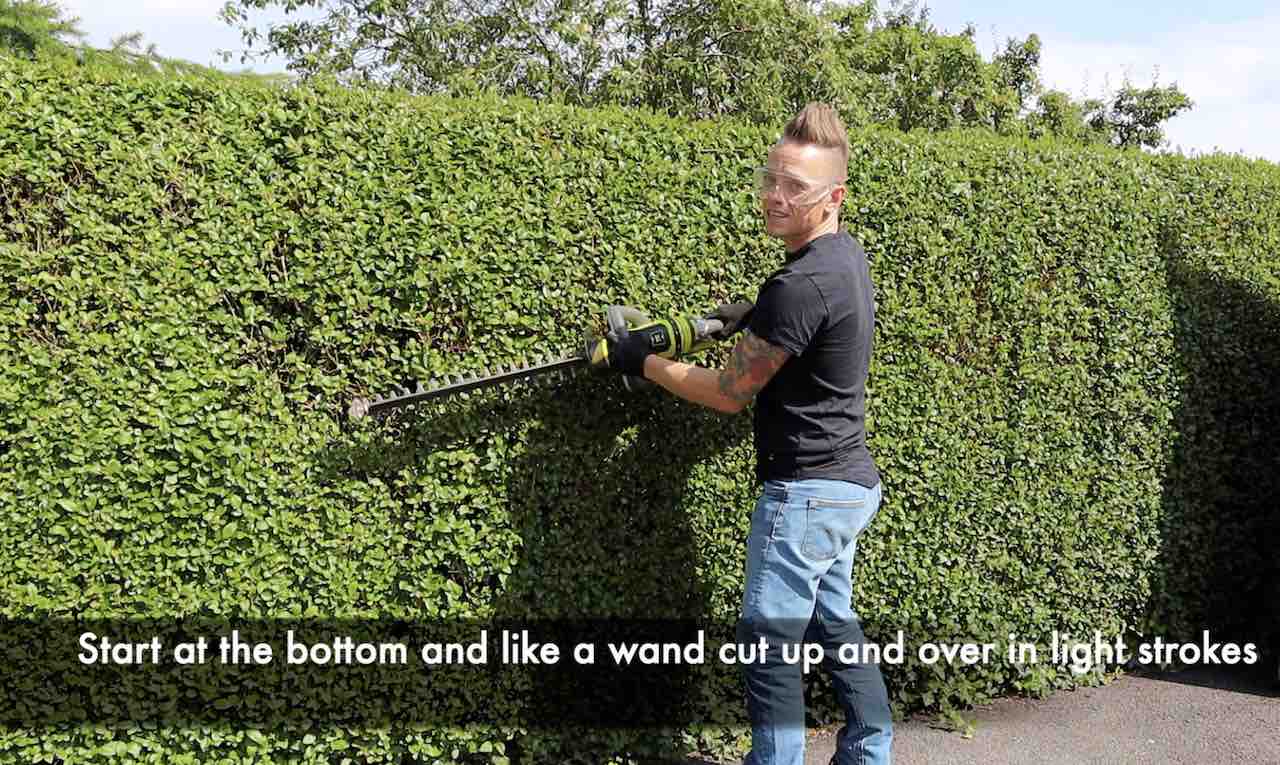Hi @ddangerous
Great question about this wonderful yet highly thorny hedge specimen, Pyracantha, also known as the Firethorn for good reason!
You're right to ask about the best time to prune this and how far you can go as the internet is full of contrary advice when it comes to pruning.

Pyracantha is a super thorny, though evergreen shrub. It provides a number of garden benefits, in particular as a hedge.
Benefits of a Pyracantha/firethorn hedge:
- Provides evergreen year-round cover
- Flowers in the summer with a white blossom
- Red, orange or yellow fruits follow mid-season, which are great for birds
- It's tolerant of nearly all conditions
- Is great as a burglar deterrent due to the thorns
- Helps stop road pollution spreading into gardens
Drawbacks of Pyracanthus/Firethorn hedges:
This page contains affiliate links for products I use and love. If you take action (i.e. subscribe, make a purchase) after clicking a link, I may earn some gardening commission which helps me keep the Garden Ninja Blog free for all.
What time of year can I prune Pyracantha?
The best time of year is early spring just as the bulbs are coming up in the garden and before the birds' nest. It's really important to check for nesting birds when cutting hedges, so you don't disturb them and in turn, weaken wildlife.

It will take a few months for the fresh leafy growth to emerge but it will soon repopulate itself.
Can I hard prune Pyracantha?
Contrary to what other sites tell you, yes you can! In fact, it's a great plant species to hard prune. It's tough as boots and will respond well. The only drawback is you'll probably lose this year's flowers but other than that early Spring ie March is the best time to hard prune Pyracantha.
You can even prune it back down to the ground if need be and let it regenerate. However, it will take a good few years to start establishing as a hedge. In your case, I'd take back a good ft or two and it will be fine.
How to prune Pyracantha
The best way to prune Pyracantha is with electric sheers vs secateurs. This is because they make light work of the many small thorny branches. You can use hand sheers, but it's hard work, and you end up scraping your knuckles if you're not careful.
For a light trim passing over cutting off 2-3 inches is enough to neaten a Pyracantha.
For a hard prune do several passes with the electric sheers. Take off 3 inches each time you pass over. That way you get a nice neat cut.

If you need more guidance my hedge cutting guide here should help.
https://youtu.be/_Dc3B2I7bu4
What to do with Pyracantha cuttings?
Whilst I always advocate home composting any super thorny shrubs like Pyracantha can be a problem as the thorns make handling the compost a bit of a nightmare. Use a thick pair of gloves and a heavy-duty plastic garden trug to collect the clippings ready to be composted or recycled. The best way to combat this is to either:
The clippings will take about a year to break down due to their woody structure. They are very carbon-heavy so should be treated as brown compost matter not green (nitrogen rich).
I hope that helps in bringing you Pyracantha or firethorn hedge in check!
Do let us know how you get on.
Lee
Hi @ddangerous
Great question about this wonderful yet highly thorny hedge specimen, Pyracantha, also known as the Firethorn for good reason!
You're right to ask about the best time to prune this and how far you can go as the internet is full of contrary advice when it comes to pruning.

Pyracantha is a super thorny, though evergreen shrub. It provides a number of garden benefits, in particular as a hedge.
Benefits of a Pyracantha/firethorn hedge:
- Provides evergreen year-round cover
- Flowers in the summer with a white blossom
- Red, orange or yellow fruits follow mid-season, which are great for birds
- It's tolerant of nearly all conditions
- Is great as a burglar deterrent due to the thorns
- Helps stop road pollution spreading into gardens
Drawbacks of Pyracanthus/Firethorn hedges:
This page contains affiliate links for products I use and love. If you take action (i.e. subscribe, make a purchase) after clicking a link, I may earn some gardening commission which helps me keep the Garden Ninja Blog free for all.
What time of year can I prune Pyracantha?
The best time of year is early spring just as the bulbs are coming up in the garden and before the birds' nest. It's really important to check for nesting birds when cutting hedges, so you don't disturb them and in turn, weaken wildlife.

It will take a few months for the fresh leafy growth to emerge but it will soon repopulate itself.
Can I hard prune Pyracantha?
Contrary to what other sites tell you, yes you can! In fact, it's a great plant species to hard prune. It's tough as boots and will respond well. The only drawback is you'll probably lose this year's flowers but other than that early Spring ie March is the best time to hard prune Pyracantha.
You can even prune it back down to the ground if need be and let it regenerate. However, it will take a good few years to start establishing as a hedge. In your case, I'd take back a good ft or two and it will be fine.
How to prune Pyracantha
The best way to prune Pyracantha is with electric sheers vs secateurs. This is because they make light work of the many small thorny branches. You can use hand sheers, but it's hard work, and you end up scraping your knuckles if you're not careful.
For a light trim passing over cutting off 2-3 inches is enough to neaten a Pyracantha.
For a hard prune do several passes with the electric sheers. Take off 3 inches each time you pass over. That way you get a nice neat cut.

If you need more guidance my hedge cutting guide here should help.
What to do with Pyracantha cuttings?
Whilst I always advocate home composting any super thorny shrubs like Pyracantha can be a problem as the thorns make handling the compost a bit of a nightmare. Use a thick pair of gloves and a heavy-duty plastic garden trug to collect the clippings ready to be composted or recycled. The best way to combat this is to either:
The clippings will take about a year to break down due to their woody structure. They are very carbon-heavy so should be treated as brown compost matter not green (nitrogen rich).
I hope that helps in bringing you Pyracantha or firethorn hedge in check!
Do let us know how you get on.
Lee
ddangerous has reacted to this post.
 Lee Burkhill: Award Winning Designer & BBC 1's Garden Rescue Presenters Official Blog
Lee Burkhill: Award Winning Designer & BBC 1's Garden Rescue Presenters Official Blog



